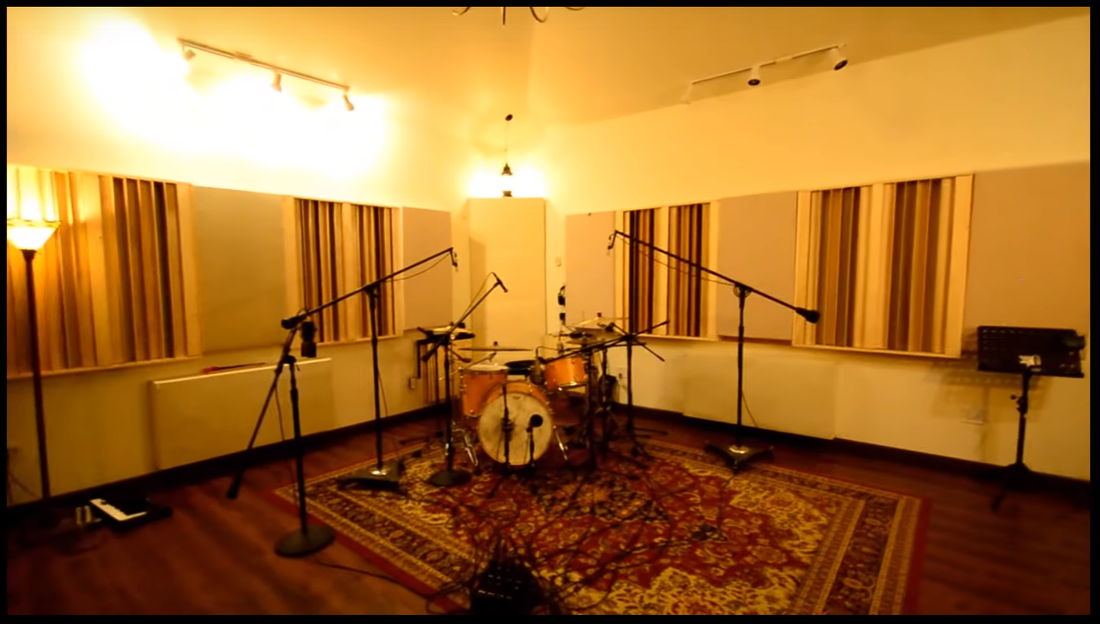Hello Friends -
This is a photo of the drum setup. I'm standing right behind the AEA R88 stereo room mic. The Kit is a custom maple kit, 22" kick, 13" rack tom, 16" floor tom, 14x6.5" Ludwig Supraphonic snare. The cymbals are Meinl Extra Thin Hammered Crashes, and a 24" Big Apple Dark Ride. Hihats were Sabian Evolution 16" Crash (top) and Zildjian Medium Thin Crash (bottom). Yes, you can use crash cymbals as hi-hats! Asy you can see, my room has a high ceiling (13' at the highest) and is treated well. The drums seem to sound best in this corner, as opposed to out in the room. The walls are not parallel in this space, so this corner is actually more like 110 degrees rather than 90 degrees - maybe that helps. The walls are treated with a combination of diffusion, deflection, and absorption. The floor is laminate over concrete, and it sounds great to my ear. I am always tweaking the space - it's so critical to getting a great sound on any instrument. Number of Plugins used total: 14 DRY DRUMS MIXED DRUMS REMEMBER - K
5 Comments
Paolo Montinaro
10/8/2019 09:13:05 am
Hi there
Reply
Leave a Reply. |
AuthorKendal Osborne is the Host of the Recording Lounge Podcast and the Owner / Head Engineer at The Closet Studios Archives
April 2021
Categories
All
|

 RSS Feed
RSS Feed